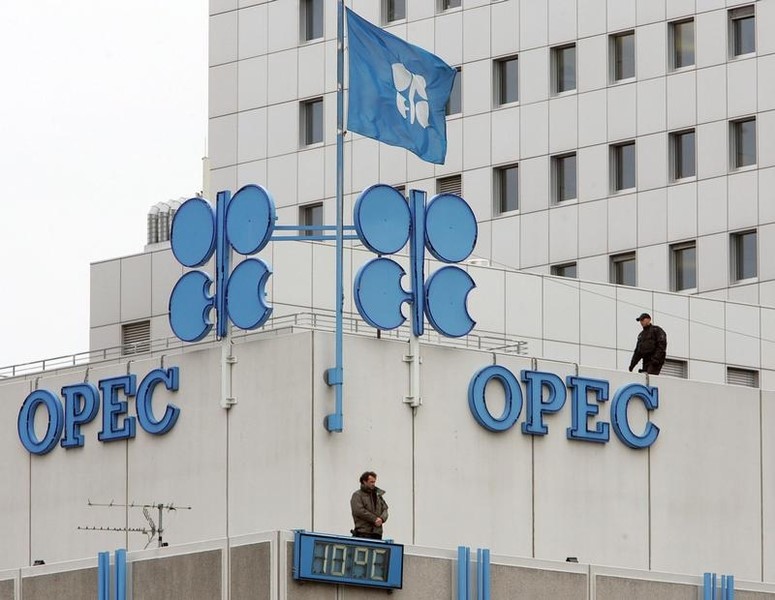Investing.com - As headlines around the OPEC technical committee meeting in Vienna and whether oil producers within the cartel will be able to reach an agreement at their official meeting on November 30 caused extreme volatility in oil prices on Monday, experts looked ahead to what a potential deal over limiting crude output could mean both short-term and throughout 2017.
In September, OPEC, which accounts for a third of global oil production, agreed to cap output at around 32.5-33.0 million barrels per day versus the current 33.64 million bpd to prop up oil prices, which have more than halved since mid-2014.
However, no individual quotas were set at that meeting with details promised to be finalized at the official meeting set for Wednesday.
As of Monday, the OPEC technical committee continued to work out those details in Vienna.
A $12 crash or a $5 dollar jump?
JP Morgan put the chances of an agreement on Wednesday at 60%, but warned that a lack of a deal could take prices down to $35 to $40, depending on other factors such as weather or broader financial market stability.
On the other hand, Morgan Stanley warned that, although unlikely, “a strong announcement from OPEC to cut meaningfully (especially towards 32.5 mmb/d) could lift oil $5/bbl or more over the following days (as Algiers did), particularly if supported by strong words from non-OPEC, before focus shifts to execution risk, sustainability and any non-OPEC supply response.”
OPEC deal could set the path for oil prices in 2017
According to JP Morgan, while an agreement on output limits could frame price formation for all of 2017, an OPEC deal is not the only factor that these experts consider for the future price of oil.
Assuming that the cartel delivers on its self-imposed production constraint, JP Morgan predicts that oil could end 2017 in the $45 to $50 range if the new U.S. administration to be run by President-elect Donald Trump prioritizes trade sanctions over stimulus.
“However, the combination of US trade sanctions/weaker growth and the lack of an OPEC agreement risks sending oil prices back to retest the cycle low point as another four quarters of stock builds would weigh significantly on spot crude prices,” they warned.
Along the same lines, Morgan Stanley also believes that OPEC’s actions will determine the path for oil prices in 2017.
“If OPEC can cut production meaningfully, it could bring forward the timing of rebalancing and the next phase of the cycle where investment is incentivized,” these economists said.
Not unlike JP Morgan, Morgan Stanley analysts feel that oil prices show limited downside based on sentiment and position and expect them to continue to trade in the $40 to $55 range for much of 2017.
Ultimately, their 2017 outlook seems to hinge less on the outcome of the November 30 OPEC meeting.
“OPEC’s ability to support materially higher prices for all of 2017 may be limited, given a potential supply response (albeit with a lag), and the group’s poor history of complying with quotas,” these experts explained.
Volatile trade in oil as OPEC headlines fly
Trading on Monday was volatile with prices fluctuating depending on the headlines related to the output deal.
Last Friday, Saudi Arabia cancelled talks with non-OPEC producers such as Russia that were originally set for Monday, because it felt the cartel would need to sort out its differences first.
Over the weekend Saudi Arabia’s oil minister Khalid al-Falih said supply curbs may not be needed, saying prices will stabilize in 2017 without an intervention from OPEC.
The remarks were seen as an indication that an agreement on OPEC’s first production cut in eight years may not be reached in Vienna.
Supporting crude prices, oil ministers from Algeria and Venezuela were reported to travel to Moscow on Monday in a bid to persuade Russia to take part in cuts rather than merely freezing output.
Prices also jumped after Iraqi oil minister Jabar Ali al-Luaibi said Monday he is “optimistic” that OPEC will reach an agreement that is acceptable to all this week.
Iraq and Iran have been reluctant to accept caps or reductions to their own output.
U.S. crude futures fluctuated between $45.16 and $47.29 on Wednesday and last gained 2.19% to $47.07 by 10:09AM ET (15:09GMT).
